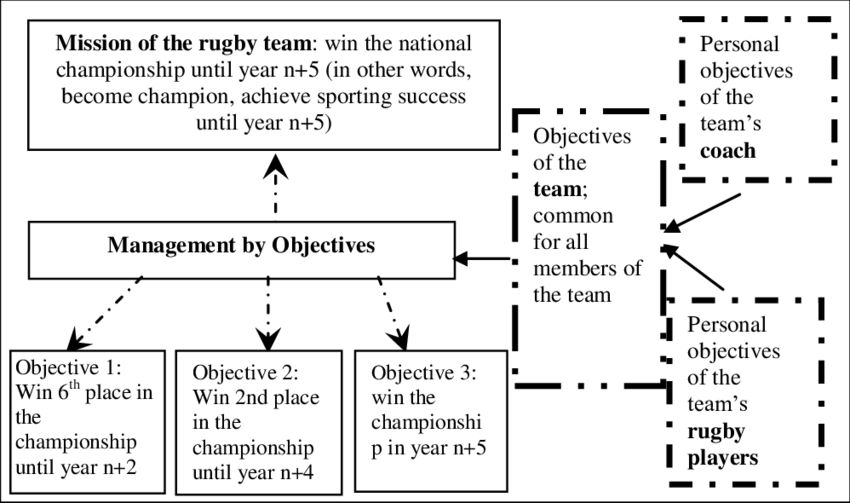Management by Objectives (MBO) is a method designed to coordinate and motivate all staff in an organization by dividing the organization’s overall aim into specific targets for each division, department, manager and employee.
This system sets and communicates objectives to all levels of an organization, and to all employees who work within it.
Examples of Managing by Objectives (MBO)
An example of how any company can incorporate the principles of Management by Objectives (MBO) can be the hierarchy of business objectives. Let’s see how it is done by dividing the corporate aim into objectives at every lower level of the business organization.
EXAMPLE 1: Managing by objective to maximize shareholder value.
Let’s say that the business aim of your company is to maximize value for your shareholders. In order to do so, your corporate objective says to increase profit by 20% per year. Then, in order to increase profit by 20% per year for the whole company, each region where your company operates will have divisional objective of increasing sales revenue by 15% and decreasing fixed costs by 5%. In order to increase sales revenue by 15% and decrease fixed costs by 5%, each department in the company will have its own departmental objectives:
– Marketing Department: Increase sales of most popular products by 20% and decrease spending on promotion by 5%.
– Finance Department: Reduce the cost of interest on new bank loans by 5%.
– Production Department: Develop two best-selling products every year.
– Human Resources Department: Change from external recruitment to internal recruitment to reduce the cost of hiring workers by 50%.
After departmental objectives are set, each worker in each department will have its own individual targets to achieve. For example, workers in the marketing department to increase sales of the most popular products by 20% will have to increase sales per shop by an average 20% and increase sales per client by an average 20%.
EXAMPLE 2: Managing by objectives the process of planning the road to sporting success by the rugby manager.

How to maximize the effects of Management by Objectives (MBO)?
The Management by Objectives (MBO) is going to be the most effective when aligned with Theory Y approach from the Douglas McGregor’s Theory X and Theory Y concept of motivation.
Theory Y, adopting a participative management style, says that if you as a manager believe that your employees take pride in their work and see it as a challenge, you will use this approach to trust your people that they will take ownership of their work and do it effectively by themselves. You give them enough autonomy and space to achieve their individual objectives.
Individual targets for employee performance should be established during the annual evaluation (appraisal) process. Those specific personal targets need to be mutually agreed with each worker to give maximum effect. If this process is done properly after discussion and agreement with personnel at each level of the business, then it can be a very effective method of delegating authority down the chain of command, and a very powerful way of motivating all staff.
Theory X, adopting an authoritarian style of management, says that you believe that your team members dislike their work, have little motivation and need to be micromanaged to ensure that the job gets done properly. If you as a manager use Theory X style to impose the targets at each level then motivation is likely to be low.
Therefore, individual targets, should not be just established without the worker’s agreement.
 Articles: 1,512 · Readers: 757,000 · Views: 2,260,160
Articles: 1,512 · Readers: 757,000 · Views: 2,260,160 